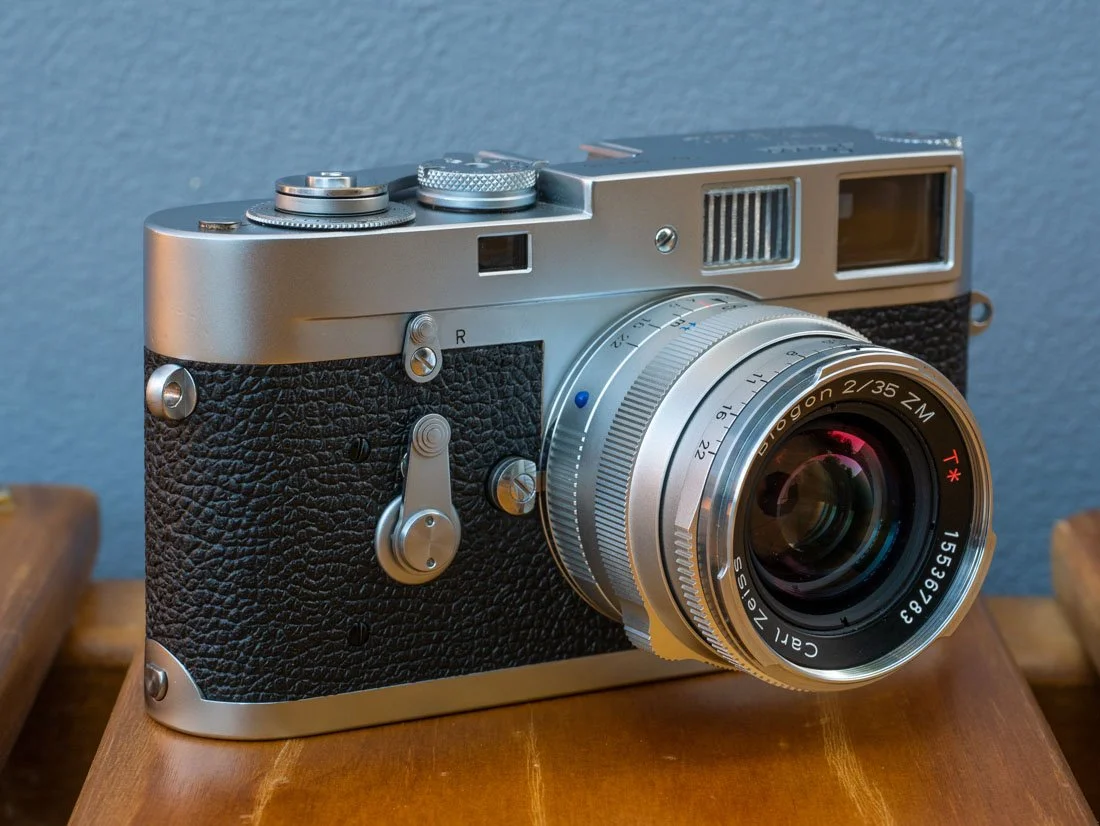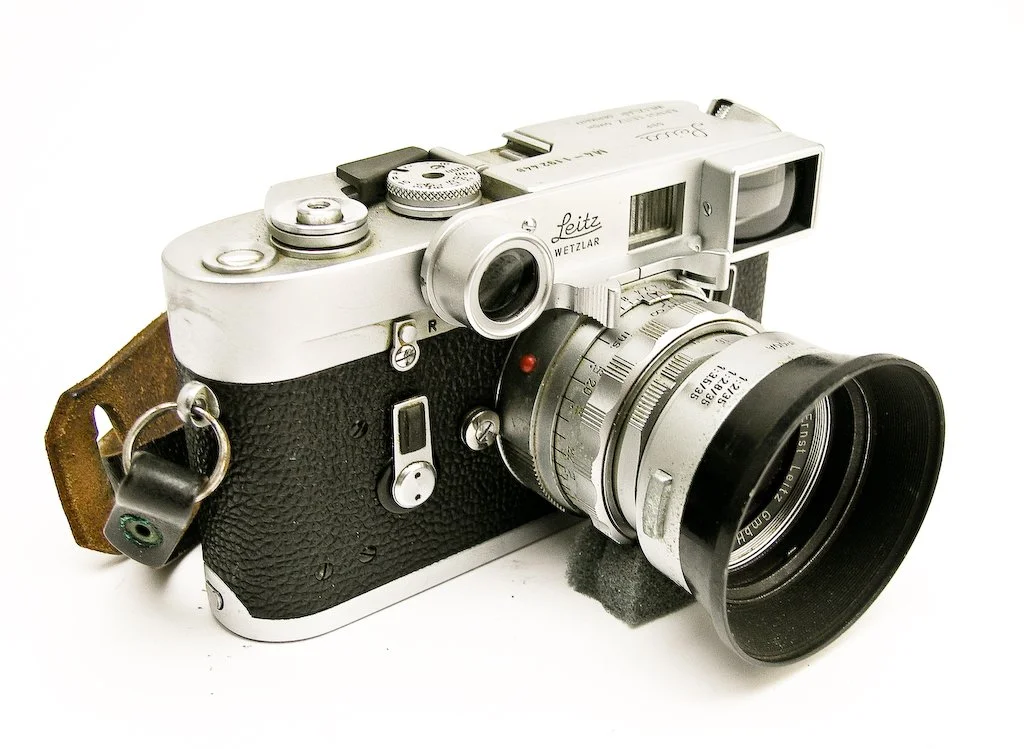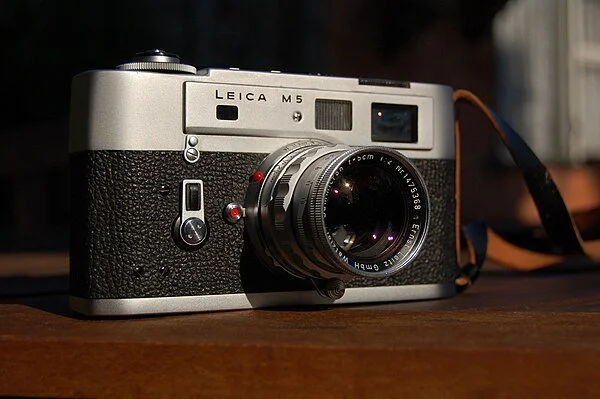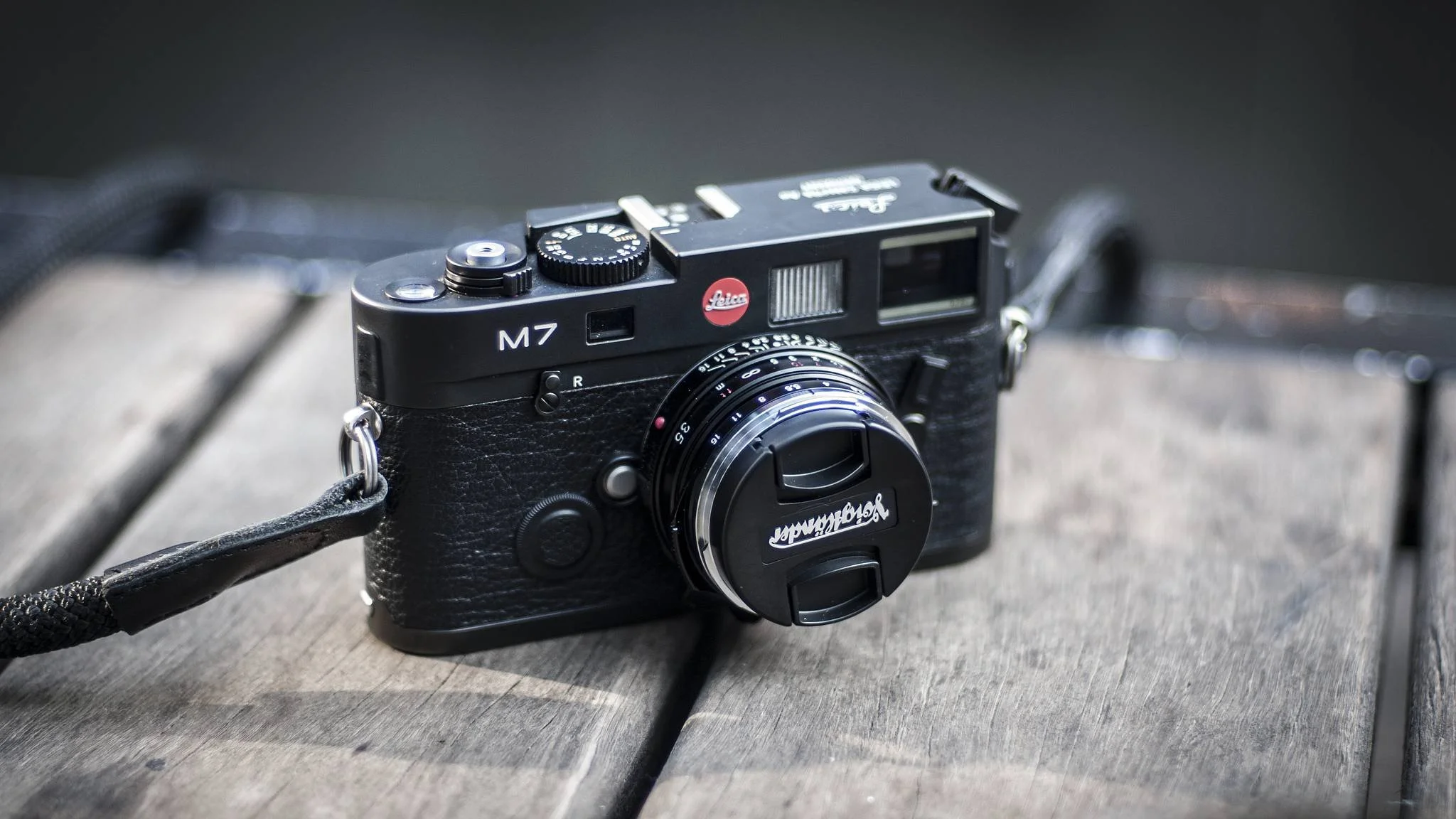Maybe I Should Buy a Leica: Everything You Need to Know
In the photography world, some names have a certain aura; these are iconic, legendary and known for the quality of their build and the images they produce. These include Rollei, Carl Zeiss, Hasselblad and, of course, Leica. But of these, it is Leica, which carries both cameras and optics as high-quality items. In many cases, there is a point where a photographer goes, ‘Maybe I should buy a Leica,’ but there are so many choices out there that choosing the camera that will best suit your needs can be difficult. I will walk you through the various cameras that make up the iconic M-Series of rangefinders from Leica, discuss each model from the M2 to the M-A, and go into a bit about lenses. And ultimately give you some suggestions and price ranges to help guide you on your journey to making this significant investment.
A Note of Caution
Historical Context
The M-Series
A Word on Lenses
Putting the Kit Together
A Note of Caution
Like anything in the photography world, a new camera or a high-end camera will not automatically make you into a better photographer by simply owning a Leica or using Leica lenses. These are precision instruments that require you to know what you’re doing. Most M-Series cameras are without an internal light meter, and a few have no semi-automatic exposure control. These cameras also offer little in the way of a safety net. They will let you shoot a whole roll of film with a lens cap on or a lens retracted into the body. They also won’t warn you when you’ve mis-loaded your film. These cameras can make you a better photographer, often by highlighting your mistakes and making you slow down and consider everything. And if you’re mainly used to working with SLR, using a rangefinder requires a bit of thinking regarding composition. Thankfully, the M-Series is more user-friendly than the older Barnack Leica’s, but not by much. If there are two critical things to take away from this warning, try before you buy, and second, read the manual—and finally, practice, practice, practice.
2. Historical Context
The modern company we know as Leica AG (renamed to this in 1982) formed as a microscope manufacturer in 1849. Noted Prussian mathematician and mechanic Carl Kellner had devised a new optical formula and opened a workshop in Wetzlar, Prussia (later Germany). Carl would die and pass the shop on to his wife, who hired another young mechanic, Ernst Leitz, who took on the whole workshop in 1869 and applied his name, Ernst Leitz GmbH. Leitz microscopes became renowned for their optical and build quality. In 1911, Leitz hired Oscar Barnack, a former employee of Carl Zeiss, to head up the research department. Barnack was an avid naturalist and photographer who enjoyed hiking in the beautiful German countryside. His asthma meant that he could not carry the heavy photography equipment of the day to get the image quality he desired. At the urging of Leitz, Barnack began to develop a camera that used cinefilm, or 35mm film. By 1914, Barnack completed a prototype camera, a fixed lens, and a viewfinder camera. The start of the First World War shelved the project. It was Ernst Leitz II, the second son of Ernst Leitz, who, upon taking over his father’s company in 1920, urged Barnack to continue his work despite the severe economic issues being faced by Weirmar Germany. In 1923, the first twenty-five prototype cameras were produced and were an instant success to those who trialled them. In 1924, Leitz introduced the Leitz Camera or Leica. The Leica featured a fixed 50mm f/3.5 Leitz Anastigmat lens, bottom-loading film, and a viewfinder to help with composition. Interchangeable lenses came in 1930, and a level of standardisation came in 1932 with the Leica Standard, later, the Leica I. The Leica II introduced a coupled rangefinder. Photographers could get their Leica I updated to a Leica II by the Wetzlar factory. The slow shutter speeds appeared on the Leica III. These three models of Leicas are collectively known as Barnack Leicas, as they are all based on the design of Oscar Barnack. Throughout their production from 1932 to 1956, they went through several different models. The “A” model increased the top shutter speed from 1/500” to 1/1000”, the “B” model moved the viewfinder and rangefinder windows closer together, and the “C” model moved to a single die-cast frame to speed up manufacturing.
The interwar years turned Leitz into a household name and turned the small Wetzlar factory into a global force in the photography world. These cameras earned Leitz a name for camera and lens build and optical quality. And many photographers wanted a Leica camera. This fact was used by the new far-right German government under Adolf Hitler, holding up Leitz as an example of German superiority. The feeling was not mutual, as Leitz held different beliefs and actively opposed the policies of the Third Reich. Leitz arranged for many employees and their families to be relocated to other Leitz offices outside of Germany, often employing family members until they got jobs in their new homes. And even during the war, when slave labour was forced upon Leitz, those who were used in the war efforts were treated better than other companies. These actions often caused visits by the SS and Gestapo to Leitz and his family. But after the war, Wetzlar ended up in the Allied zone of control, and they knew that leveraging the German camera business was one of the keys to economic recovery.
Leitz also realised that they would need to diversify and move some manufacturing out of Germany during this recovery period. First was opening a lens coating plant in France and second a full lens and camera manufacturing plant in Midland, Ontario, Canada. In the post-war, two more Barnack Leicas were released; the “F” model had modern flash synchronisation, and the “G” model updated the shutter speeds to the more familiar geometric progression rather than logarithmic. But it was in 1954 that Leitz released their latest camera system, the Leica M3. A brand new camera that still carried over some of the previous technology but wrapped it up in a unique body style, a new bayonet-style lens, and a single rangefinder/viewfinder window.
3. The M Series
First released in 1954, the M-Series has gone through many different changes throughout its production, which continues to the present day, but all the cameras have retained the same style and form factor, both in 35mm and digital options. While there have been many different models and sub-variants, I will lay out the basic models from the M3 to the M-A. Plus, some of the variants of the camera models.
Leica M3 (1954-1966)
Despite being called the M3, this is the first of the M-Series. The M3 is the camera that introduced the world to the new generation of Leica cameras. It features a combined viewfinder/rangefinder window with frame lines to assist with composition using a 50mm, 90mm, and 135mm lens. These frame lines are adjusted automatically depending on which lens is mounted. Loading your film is still done through the bottom of the camera with a removable spool, but there is a flip-up door to better help determine if your film is loaded and advancing correctly. The film rewind is a post-type rewind knob, and there is no light meter. The film advance is a traditional leaver; early models require the photographer to pull this twice, known as a double stroke. The idea behind this is that Leica engineers felt it would reduce strain on the internal parts and the film media. Later versions updated this to a more traditional single-stroke, and factory modifications were available. There is a clip-on accessory, but it requires a mercury cell for the power. If you want to use wider focal lengths, there are a couple of options. First is to use a goggle accessory that fits over the viewfinder and rangefinder; second is an auxiliary finder mounted on the cold shoe. On the used market, the M3 will run you between 1,000 and 2,000 dollars on average. A variant of the M3, the MP, was released in limited numbers from 1956-7 called the MP, aimed at professionals. This version supported the Leicavit clockwork-powered motor winder. There was also the M1, which had no rangefinder, and the MD, which had no viewfinder or rangefinder. The MD is designed to be attached to a telescope or microscope for scientific purposes.
Leica M2 (1958-1966)
While the name might confuse you, the M2 was released after the M3 as a simpler version of the M3. The notable difference between the two is that you need to reset the frame counter manually, and the viewfinder has frame lines for 35, 50, and 90mm lenses. Other than that, the M2 is a copy of the M3. It also was only produced in a single-stroke film advance. Despite being a ‘simpler’ version of the M-Series, it will still cost between 1,000 and 2,000 on the used market.
Leica M4 (1967-1972)
The M4 is a notable improvement over the Leica M3 in several areas. The first and most significant is improvements in film loading. While you are still loading film from the bottom of the camera, the take-up spool is no longer removable and has a comb-like setup allowing drop-in loading. There is still a rear door to help ensure you have things loaded and advancing correctly. A traditional rewind knob replaces the rewind post with a fold-out handle. The viewfinder was also improved to a .75x magnification factor and frame lines for 35mm, 50mm, 90mm, and 135mm lenses.
Leica M5 (1971-1977)
Often called Leitz’s biggest mistake, the M5 departs from the classic rangefinders. The first thing you’ll notice is that the camera looks different, while the film loading, viewfinder, and other functions are the same; the M5 features a unique TTL metering system. The sensor is on an arm that swings out before the shutter curtain. When the film is advanced, and the shutter is cocked, then the photographer will use a match needle to set the exposure. When the shutter is pressed, the arm swings out of the way. While certainly unique, it also is the greatest weakness. The issue is that lenses of a particular design will damage the arm and that the metering system requires a mercury cell to draw power. On the used market, the M5 runs between 1,000 and 1,300 dollars and may or may not have a functioning meter.
Leica M4-2 (1977-1983)
Rather than improve the M5, Leitz reintroduced the M4, but there were some changes. First, the M4-2 was built in Midland, Ontario, Canada. It also has the exact specifications as the M4, the same .72x viewfinder and framing lines for the 35, 50, 90, and 135mm lenses. The difference is in how the camera is built. The Canadian plant used a lot more automation in the build process. It also replaced some of the brass parts with steel, which is both cheaper and easier to manufacture. While some will look down on the camera, the M4-2 is the camera that saved Leitz’s butt. On the used market, the M4-2 runs between 1,300 to 2,000 dollars. It is also interesting to note that the Ernst Leitz Canada or ELCAN plant still operates today and produces military optics used by the Canadian Army.
Leica M4-P (1980-1985)
Technically, this is the third version of the M4 and probably the best of the three. The M4-P, like the M4-2, continued to be produced in Canada. It also continued to use the same automation for manufacturing and building materials. However, the real change and probably the best update to the camera is the viewfinder. The M4-P keeps the same .72x magnification but added frame lines for 28, 35, 50, 75, 90, and 135mm lenses. It does this by doubling the focal lengths, so two frame lines will appear depending on which lens is mounted. The M4-P costs between 1,500 and 2,000 on the used market.



Leica M6 (1984-2003, 2022-Present)
Leica returned the manufacturing of the M6 to Germany but with many of the parts taken from the M4-P, especially the brilliant .72x viewfinder and frame line system. What makes the M6 unique is that it marked the return of a light meter, but with the newest technology, the form factor of the M6 is much more familiar to the M-Series. The TTL meter is located inside the lens mount and pointed at the shutter curtain. The photographer can see a simple three-icon metering system inside the viewfinder and adjust the aperture and shutter speed until you get the green dot, with over/under indicated by red arrows. This system is tricky to see if you wear glasses. There are several variants of the M6, including the M6 TTL (additional flash support) Leica M6 J with a .85x magnification viewfinder. An unmetered version of the M6, the MP, was released in 2003. And a complete re-release of the M6 came in 2022. Used, the M6 runs between 2,000 and 3,700 dollars. A new version of the M6 is about 5,500 dollars.




Leica M7 (2002-2013)
While it may look and feel like an M-Series rangefinder, the M7 is a radical departure from the traditional form of the M-Series. The M7 is a Leica for the 21st century and fully embraces electronics. The camera relies on batteries to power both the meter and shutter. And because it has the electronics to back it up, it also features aperture-priority semi-automatic exposure. The downside is that the camera will only work at 1/60” and 1/125” for mechanical backup shutter speeds. On the used market, you can buy one for between 3,700 and 10,000.
Leica M7 © Jason Barnachea via Flickr
Leica M-A (2014-Present)
The Leica M-A returns Leica to its roots, based on the idea of a fully mechanical rangefinder. The M-A has no electronics, not even a light meter. The best part is that you can buy these new cameras. Leica went so far as to return the camera to almost the original form factor of the M3. Complete with a post-style rewind knob, but there is a flip-out handle to help make life that little bit easier. The M-A features the .72x magnification factor viewfinder and frame lines for the 28, 35, 50, 75, 90 and 135mm lenses.
4. A Word on Lenses
The one thing that you will notice when choosing a Leica is that on the used market, they rarely come with a lens attached. And there is good reason because Leica lenses are fully compatible backwards and forwards. You can mount an M-Mount lens from 1954 on your M-A and a modern lens designed for digital copies of the M-Series on your M3. You also have the option to use a Leica-made adapter to mount your older M39/LTM Leica glass on your M-series cameras. Because of this, Leica glass holds its value much more than the cameras themselves. And you’ll often pay as much for the lens as you do for the camera.
But some alternatives exist, especially if you want to stick to Leitz glass. One of the best things to do is to stick to older lenses, those designed with something other than digital in mind. Also, avoid super-fast lenses with apertures of f/2 or faster, especially in the 35mm and 50mm range. Any lens made by Leitz will have excellent quality; don’t turn your nose up at Canadian-built lenses, either. Some iconic Leitz lenses were designed and first produced in Midland, Ontario. But if even those prices are turning your stomach, you can attach third-party lenses to your camera; they won’t spontaneously combust, stop working, or die with shame. There’s nothing sinful about using third-party glass. Some good options are, of course, Carl Zeiss, Voigtlander, and Minolta. Yes, Minolta had a whole range of Rokkor-M lenses that used some of the same optical formulas as their Leitz counterparts and had some original lenses as well. Of course, you can also use 7Artistan and TTArtisan lenses which are superb modern lenses that produce decent quality images. And if you’re into experimenting with your camera, Lomography provides M-Mount lenses.
But if you’re stuck using Leitz glass, here’s an excellent way to get your kit up and running without breaking the bank too much. Start with a simple 50mm lens; a good example is the Summicron 50mm f/2; these are available in a collapsible version or a ridged version. The collapsible version runs between 550 to 620 dollars, whereas the ridged version is 1,200 to 1,500 dollars. Once you’re comfortable, grab a 90mm lens next. The Tele-Elmarit 90mm f/2.8 is overlooked in the M-Mount and older LTM mount; these run from 600 to 1,000 dollars. And finally, a good 28mm lens, the Elmarit 28mm f/2.8, will cost between 1,200 and 1,600 dollars. While the draw of a 35mm Summicron is one that is hard to ignore, these are 2,000 and up and more if you’re going for a Summilux, and don’t even bother looking at the Noctalux lenses if you’re getting started.
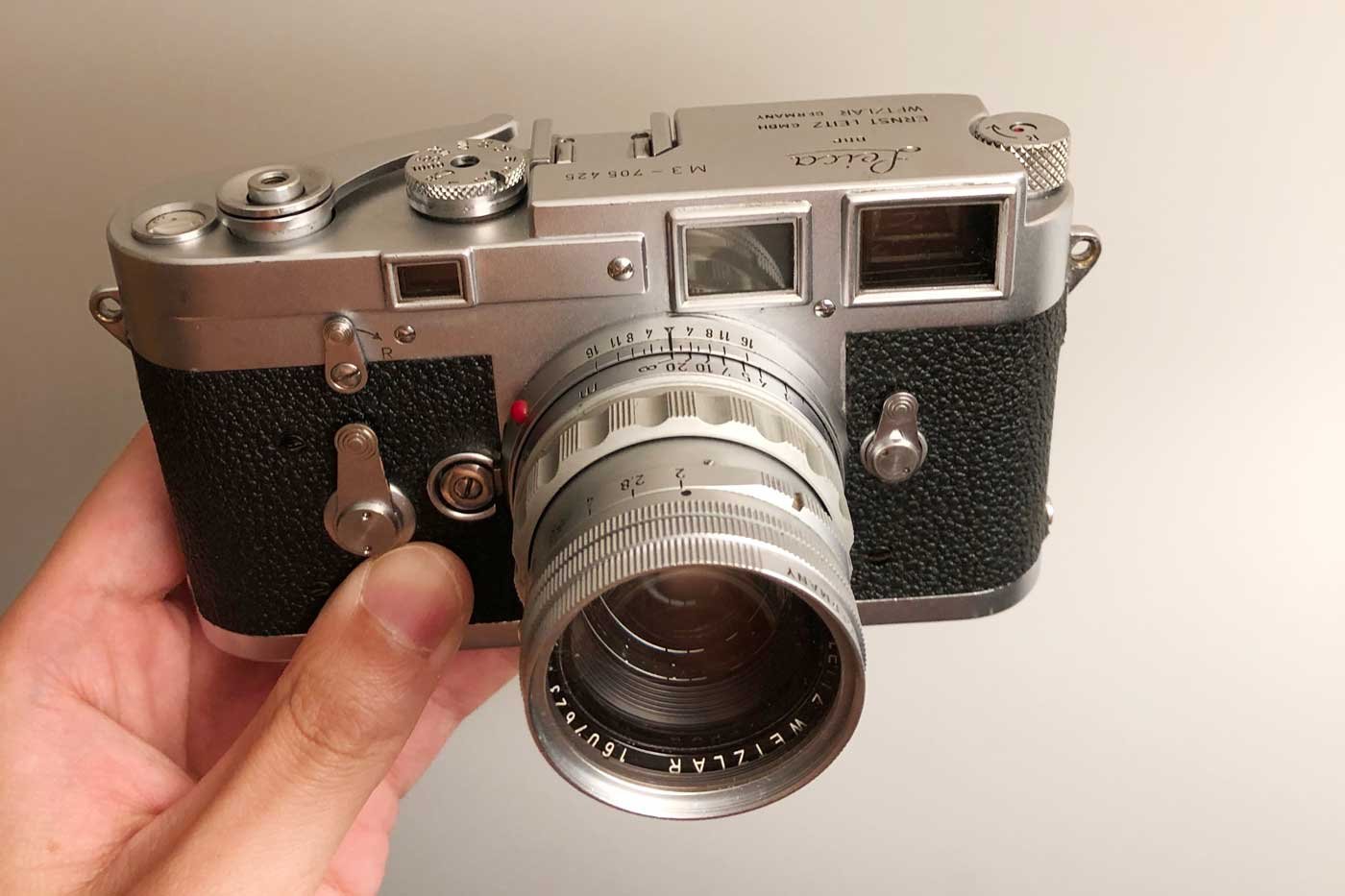


5. Putting a Kit Together
Okay, so at this point, you’re probably wondering what sort of kit I would recommend when starting your journey into Leica. While the most straightforward answer is to buy new and buy the best, that isn’t always the case. You must stop and think hard about what you will use your Leica for. As a camera system, it can pretty much do anything that your SLR can do; there is a bit more of a learning curve, especially if you’re new to the world of rangefinders. The one thing that Leica bring to the table is high quality, well built and ultra-portable systems that can be taken anywhere and don’t add much weight to your bag, which means you can run a good three-lens kit, camera body, and have plenty of extra room for more film.
The Lenses
Since your lenses are universal, this is an excellent place to start; as a rule of thumb, I always go for a good three-lens kit: 28mm, 50mm, and 90mm. These are all affordable lenses; the one thing you need to watch out for is frame lines on your camera; you may need to invest in goggles or an auxiliary viewfinder for the 28mm lens.
The Bodies
Here are a few options for what I consider your best choices. And they all depend on your comfort and budget restrictions. My number one choice for a Leica body is the M4-P. The reason is that it is a well-made camera that gives all the classic Leica look and feel but is slightly more modern in that film loading is easier despite still being a bottom loader. While many look past this because of the differences in the build (steel instead of brass for some parts), it is still a robust camera. Plus, you have access to almost every standard lens frame line in the camera, so there’s no need for goggles or auxiliary finders, which leaves your shoe free for a metering accessory.
If you’re familiar with and handle the older Barnack Leicas easily, a classic M3 or M2 is a good choice, as they are slightly more affordable than an M4-P. They also are well built, and despite their age, they still work and work well. The downside is that those frame lines limit you, and you will need either the goggles (which many photographers dislike) or a finder on the shoe.
If you don’t want to worry about having an external meter, spend the cash and get an M6. You get the best of both worlds with a solid metering system and all the needed frame lines, and these cameras are far newer. You do pay extra, but if you’re happy with a used model, you can save some money to fund that lens. If money is no object, then an M-A is your camera.
If I were putting together a kit today, that would be an all-Canadian setup, M4-P and Canadian-made, 28, 50, and 90mm. The budget would be on the conservative side of about 4,500 dollars, with an extra 1,500 added on for a complete overhaul and CLA of the camera body. Now I have some meters that I could use with the camera, the Reveni Labs original light meter, which is a tremendously simple to use hot shoe mounted meter. Although if you feel that it’s too ugly to put on a Leica, there are tonnes of sleek-looking meters out there that do the same thing. Another option is the new Incident meter, which, when appropriately held, lets your hands still work as hands. And when you think of that cost, it would still only buy a brand new body, and I’d have a nice little bit of Canadian and Leitz history.
About the Author
Alex Luyckx is a long-time photographer based in Milton, Ontario, Canada. He loves film, history, and travel. He writes both for his website, alexluyckx.com and studioC41. He is the founding host of the Classic Camera Revival Podcast and runs a YouTube channel about film photography. While mainly a Nikon SLR shooter, he has reviewed a lot of different cameras, has an objective stance on photography and kit and believes that the best camera is the one you love.
Web: www.alexluyckx.com
Facebook: facebook.com/alexluyckxphoto/
Instagram: instagram.com/alexluyckxphoto/
YouTube: youtube.com/@AlexLuyckxPhoto
Twitter: twitter.com/alexluyckxphoto/
Mastodon: mstdn.ca/@AlexLuyckxPhoto





